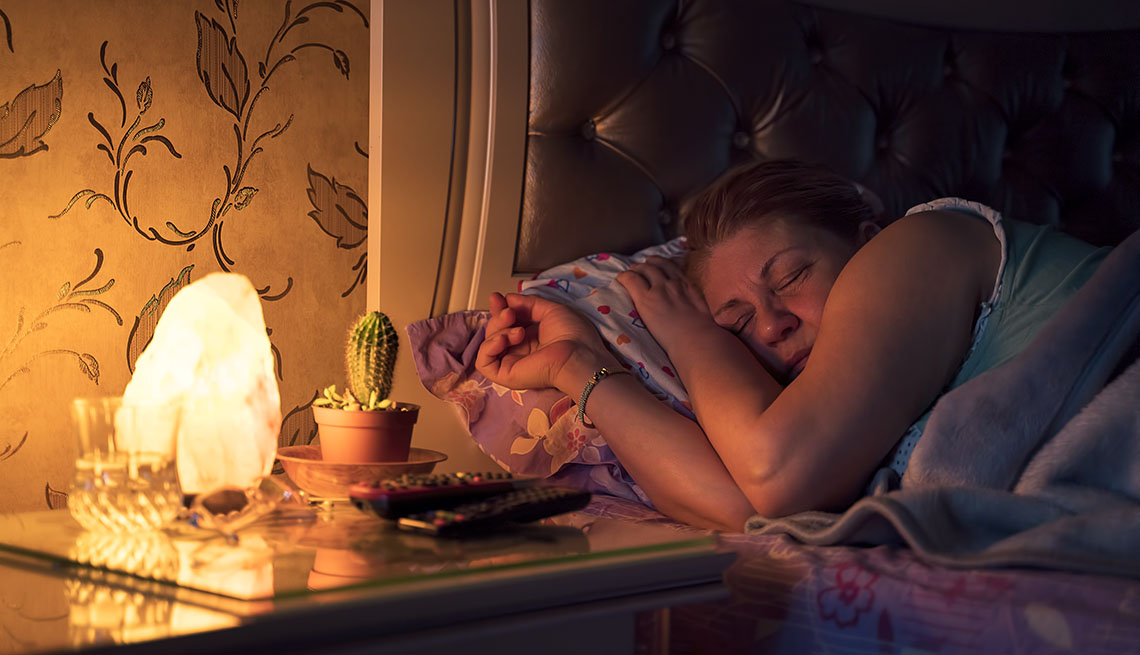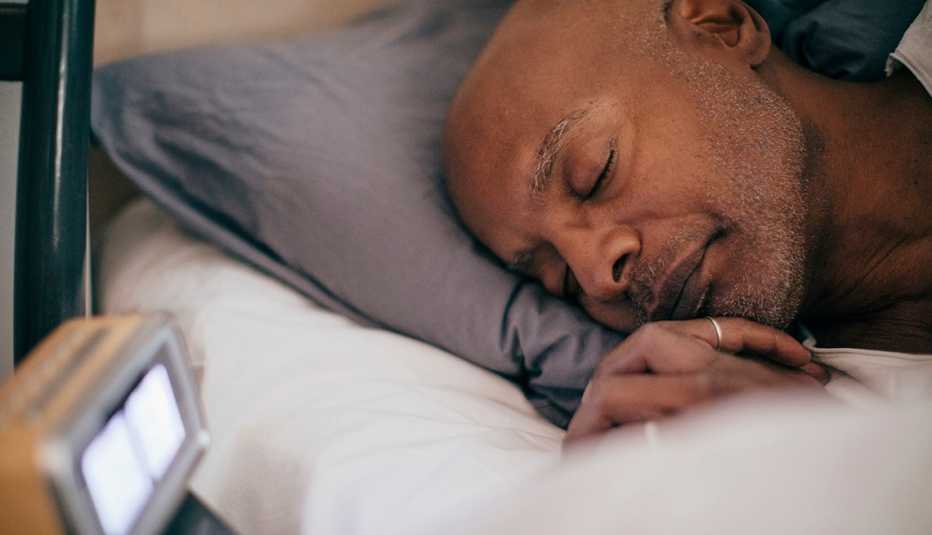AARP Hearing Center
You’ve probably heard that keeping your bedroom dark can help improve the quality of your sleep. But new research reveals that eliminating artificial light during the night — from a TV set or radio clock or streetlight — could also have a positive impact on your heart and blood sugar levels.
In an intriguing new study, Northwestern University researchers found that adults exposed to even a moderate amount of light while they slept experienced higher heart rates compared to when they slept in a very dark room. They also had more insulin resistance in the morning, which meant their bodies had to work harder to regulate their blood sugar, the study showed.
Surprisingly, the study subjects who were exposed to the light didn’t report any trouble sleeping.
“The upshot is, it appears that light during sleep is affecting you, even if you’re not aware of it,” says study coauthor Phyllis Zee, M.D., director of the Center for Circadian and Sleep Medicine at Northwestern University Feinberg School of Medicine. “Your subconscious is aware that there’s light and there’s something going on, and it’s keeping you a little bit on watch. Your fight-or-flight system is more activated.”
Elevated heart rate and insulin resistance are risk factors for heart disease and early death. The study is important because it highlights a factor you can control that could improve your health and lower your long-term health risk, Zee says.
Effects of light exposure
Previous studies have linked light exposure at night to a variety of health problems, including an increased risk of depression, type 2 diabetes and some types of cancer. In addition, a large study of 43,722 women published in 2019 found that those who slept with artificial light had a higher risk of gaining weight and being obese than those who slept in a dark room.
In light of that research, Zee says she wanted to design a controlled study to examine what happens to your body physiologically when you are exposed to light while you sleep.





































































